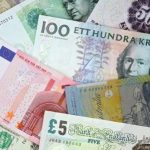
Federal Open Market Committee (FOMC) meeting took place from June 9-10, amidst the economic crisis due to Covid-19. The monetary policy decisions announced by the Fed Chairman were more or less in line with market expectations. Federal Reserve will continue with its accommodative or dovish stance by maintaining the interest rate at near zero percent.
“We’re not even thinking about raising rates. So, what we’re thinking about is providing support for this economy” said Jerome Powell during the press conference. It shows that lower interest rate and other unconventional monetary policy measures are here to stay for a longer period. In this background, Fed decided to increase the holdings of treasury and agency mortgage-backed securities over the coming months. The measures aim at bringing more liquidity to the economy.
The measures announced by the Fed would result in increased inflow of funds to emerging markets like India. Most of the Central Banks would be following a path of loose monetary policy in the coming months. Recently European Central Bank (ECB) announced an increase in bond buying programme by €600bn, and extended it till June 2021. With this announcement, the size of ECB’s Pandemic Emergency Purchase Programme (PEPP) stands at €1.35 trillion. Thus, there is surplus liquidity in the global market, and it turns out to be difficult for the Central Banks to return to a normal path of monetary policy. For more than a decade, global economy is experiencing interest rate at lower levels. With surplus liquidity floating in the market, a return to a normal path of monetary policy, whenever it happens, can have a greater impact on the global economy. It could disturb the macro fundamentals, especially of the emerging economies.
Though the monetary policy decisions were favourable for the market, the economic projections paint a gloomy picture for the US economy. US being the dominant player, its impact will be felt on the global economy as well. The famous phrase, “when America sneezes, the world catches cold” is relevant even today.
Fed forecasts a 6.5 percent contraction in the US GDP for 2020, followed by a growth rate of 5 percent and 3.5 percent in 2021 and 2022, respectively. During the Global Financial Crisis of 2008, the US economy contracted by 2.5 percent. It clearly shows that the Covid-19 crisis has a much greater impact on the economy. Similarly, Fed forecasts unemployment rate for the US at 9.3 percent, which is three times the unemployment rate that was in 2019. In this stage, it is difficult to predict the shape of economic recovery and even to forecast the growth rate. It all depends on how fast we can win the war against Covid-19.
